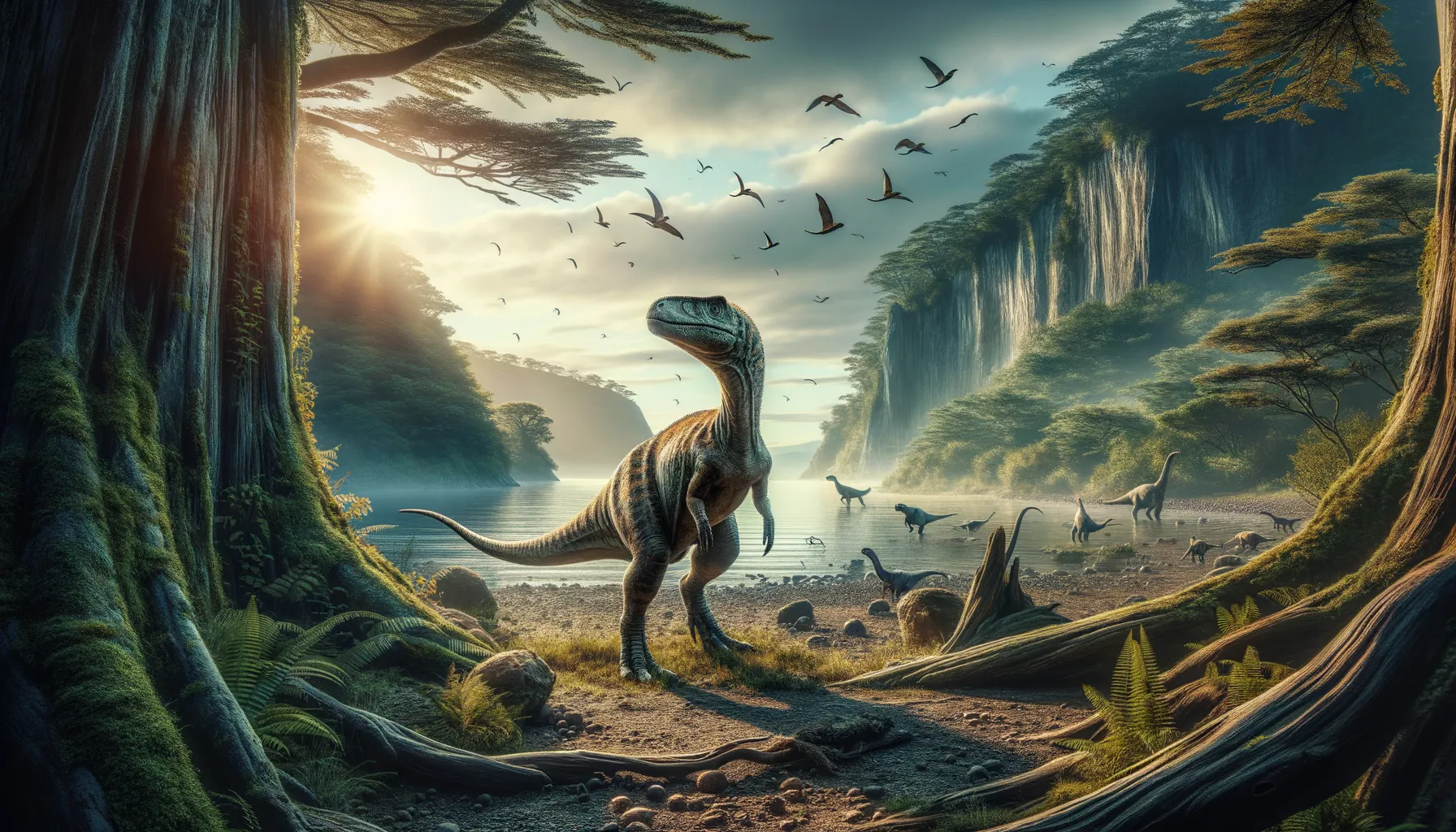
Ligabueino
Tiny terror of the Cretaceous jungle!
Period
Cretaceous
Length
Measured around 80 centimeters long.
Height
Stood about 50 centimeters tall.
Weight
Approximately 7 kilograms.
Ligabueino was a small carnivorous dinosaur from the Early Cretaceous period, identified in what is now Argentina. Its light build and bipedal stance suggest it was an agile hunter. Despite its size, it indicates the diversity of small predatory dinosaurs in its ecosystem. Fossils are scarce, limiting comprehensive knowledge. With continued study, paleontologists hope to better understand its ecology and relationships with other species of its time.
Diet
Ligabueino was likely a carnivore, feeding on small vertebrates and insects. Its sharp teeth and agile form suggest it could catch quick prey effectively.
Hunting
As an active hunter, Ligabueino depended on speed and stealth. Its small size may have required it to use the element of surprise to capture prey.
Environmental challenges
During the Cretaceous, Ligabueino faced changes in vegetation and climate. Predators larger than itself posed a constant threat, impacting its survival strategies. Competition for food among other small carnivores may have influenced its behavior and hunting territories. Adapting to these challenges was crucial for its survival.
Speed
Moderate runner, swift on short bursts.
Lifespan
Lived for around 10 to 20 years.
First discovery
Discovered in Argentina in 1996.
Fun Facts
- Ligabueino was a small dinosaur, estimated to be about the length of a modern chicken.
- This dinosaur lived during the Early Cretaceous period, around 130 million years ago.
- Ligabueino's name is in honor of the Italian fossil hunter Giancarlo Ligabue.
- The fossil remains of Ligabueino were discovered in Argentina, which is known for its rich dinosaur history.
- Despite its small size, Ligabueino is believed to have been a fast and agile runner.
- Ligabueino belongs to a group of dinosaurs called theropods, which are mostly known for being carnivorous.
- Only fragmentary fossils of Ligabueino have been found, so much about it remains a mystery.
Growth and Development
Ligabueino likely grew rapidly to reach maturity, necessary for survival amidst predators. Juvenile individuals might have stayed close to cover for protection. Skeletal remains suggest developmental stages similar to those of small theropods.
Habitat
This dinosaur inhabited lush, forested areas with ample cover, perfect for small, agile hunters. The dense vegetation provided necessary shelter. Streams and rivers wound through its territory, supporting a range of prey animals.
Interaction with other species
Ligabueino coexisted with larger dinosaurs, avoiding them to minimize encounters. It might have scavenged from leftovers of larger carnivores when competition was low. Its presence suggests a dynamic ecosystem with varied interactions.
Natural lifespan
Typically, it lived for about 10 to 20 years.
Reproduction
Reproduction likely involved egg-laying, typical of theropods. Nesting sites might have been chosen for protection against predators. Hatchlings faced immediate survival challenges in predator-rich habitats.
Social behaviour
Ligabueino's social structures are not well known, but solitary hunting fits its carnivorous nature. However, possible occasional group living could have been for reproduction or protection.
Fossil locations
Fossils of Ligabueino have been found in Neuquén Province, Argentina. Discoveries remain limited, hinting at its rarity or specific habitat preferences. Future finds could provide further insights into its ecology.
